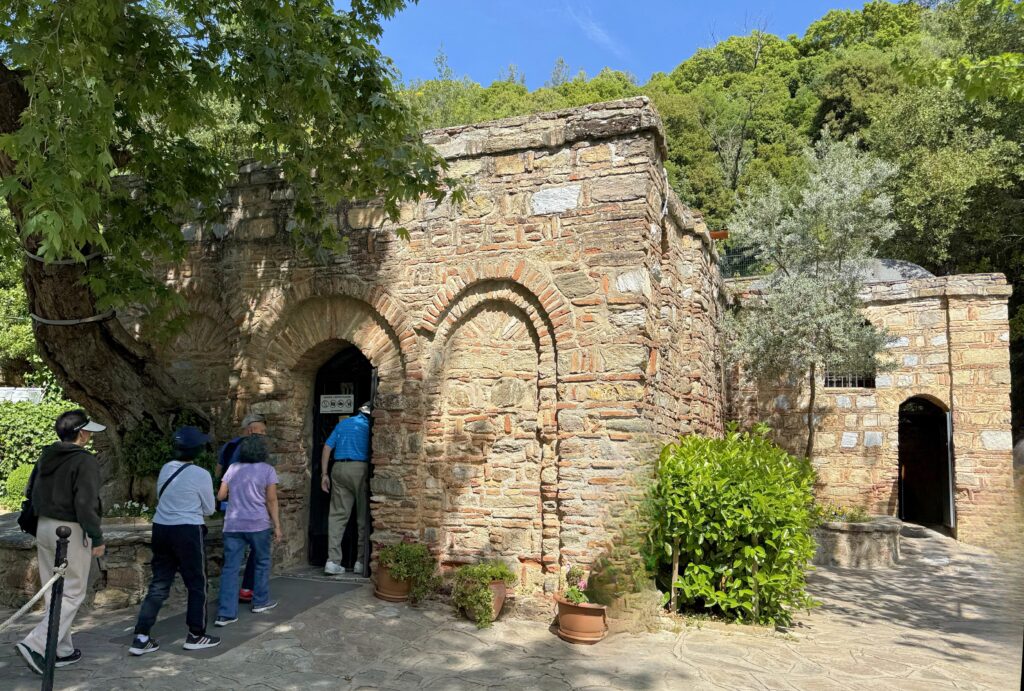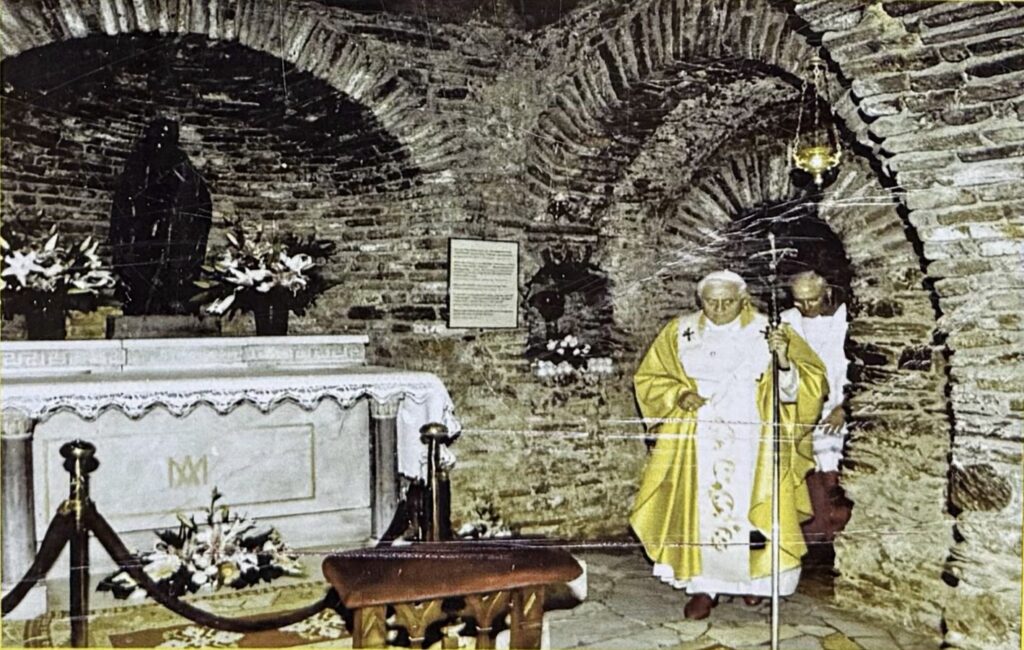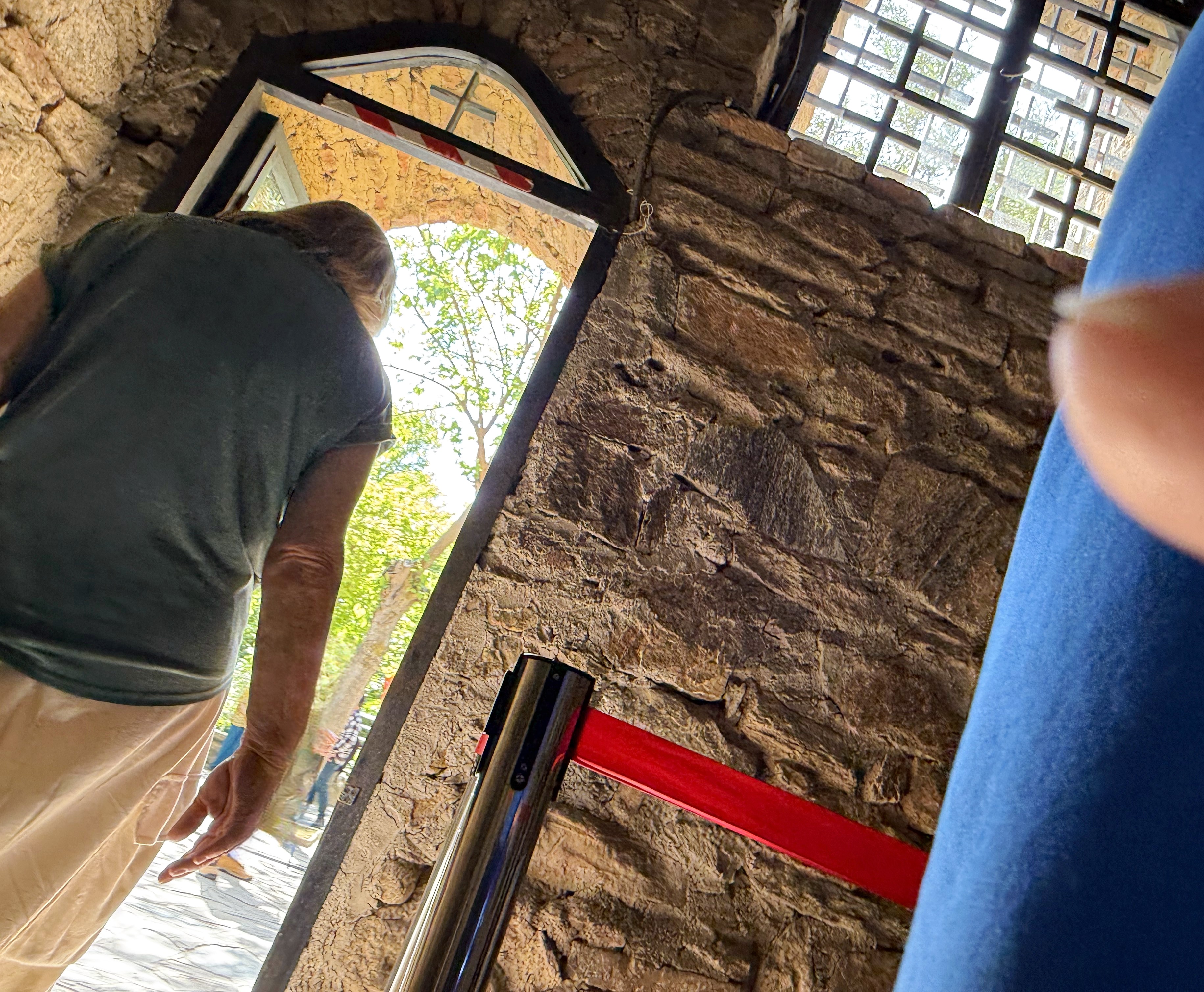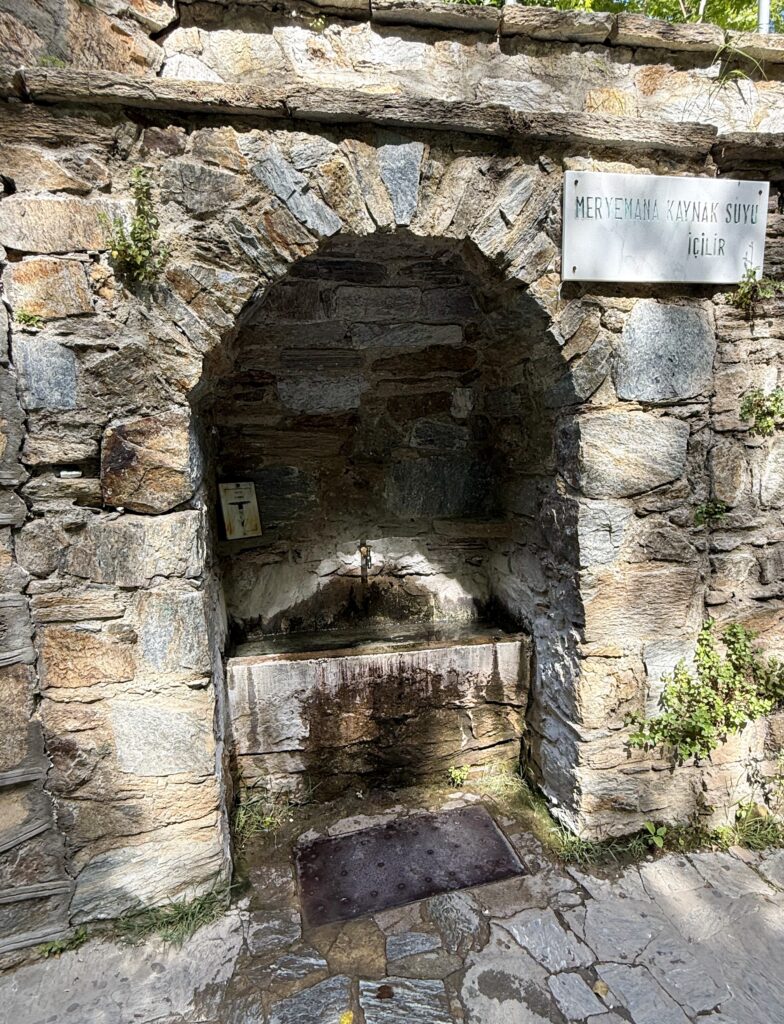
The House of the Virgin Mary (also called Mother Mary’s House), located on Mount Koressos above Ephesus, is a major Roman Catholic and Greek Orthodox site. It is also a special place for Muslims. Mary has her own chapter in the Muslim Quran. There is no Biblical record or contemporary account of what happened to Mary after the end of the four Gospel books. What the Gospels say is that the Lord on the cross looking down saw his mother and the Apostle John and said:
“When Jesus therefore saw his mother, and the disciple standing by, whom he loved, he saith unto his mother, Woman, behold thy son! Then saith he to the disciple, Behold thy mother! And from that hour that disciple took her unto his own home.” John 19:26-27.
Apparently the life of John from that point onward was entwined with the life of Mother Mary. What happened to John? We do not know exactly how long he stayed in Jerusalem. He appeared to have resettled in Jerusalem for an unspecified time (Acts 3:1, 11; 4:13; 8:14), perhaps about 2 decades. Paul mentions meeting with James, Peter, and John in Jerusalem, “And when James, Cephas [Peter], and John, who seemed to be pillars, perceived the grace that was given unto me, they gave to me and Barnabas the right hands of fellowship; that we should go unto the heathen, and they unto the circumcision.” Galatians 2:9. This epistle was written about 55-56 AD from Ephesus. The meeting with James, Cephas, and John took place in Jerusalem at the beginning of Paul’s second missionary journey in Acts 15. The second mission began around 48-50 AD.
Apparently when Acts 15 takes place John is still residing in Jerusalem, this is about 48-50 AD. This would put Mother Mary at approximately age 66. Although this is an approximate age, it makes it possible that Mary might have died of natural causes and was buried around Jerusalem (see The Tombs of the Virgin Mary).
The last we hear about John was that he was exiled to the isle of Patmos (Revelation 1:9) in the 90’s AD and Mary would have certainly died before then (in 90 AD she would have been approximately 106). The female life expectancy of the working class in the Roman Empire was little more than 40 years at most. It is possible Mary could have lived to her mid sixties, but even the elite wealthy class didn’t usually live past their seventies.
That said, prior to John’s stay on Patmos, there is a tradition and some early church supporting records (from about about 100-159 AD), that John had previous to his exile spent time with each of the seven churches he names in the book of Revelation chapter’s 2 and 3: Ephesus, Smyrna, Pergamos, Thyatira, Sardis, Philadelphia, and Laodicea. Because of this, the House of Mary at Ephesus is possible, though unlikely.

Inside the House of the Virgin Mary photography is forbidden. About every 5 feet there is a guard watching to prevent picture taking and keep the crowd moving. The above photo of the interior was on public display on an information board. I was, however, able to snap a hip-shot photo on the way out of the house.

The tradition of the Ephesus House of the Virgin Mary
When the Apostle John (a.k.a John the Beloved, and also John the Revelatory) came to Ephesus he placed Mary high above the city to avoid the prejudice and animosity of the pagan Ephesians. Mount Koressos is a lovely, peaceful place. After 11 years Mary was taken up (an Assumption) into heaven on August 15th. There is no Biblical prophecy for the Assumption of Mary.
According to twelfth century documents, in Byzantine times (fifth and sixth centuries) the House of Mary was converted into a chapel. In addition, in Ephesus there was built the Church of the Virgin Mary (now in ruins). Tradition held that the church was built here because Mary lived nearby. The house of Mary was damaged in a series of earthquakes and during the Muslim period of Turkey, it fell down into ruins.
In the early 1800’s a German nun named Anne Catherine Emmerich had a dream/vision of Mary’s house which included a general location. In 1891, going off of the dream/vision description, a priest discovered the ruins of the house. In the late 19th century the Roman Catholic church declared this the final house of the Virgin Mary. The house was eventually rebuilt and opened for visitors in 1951.

A few steps below the house, is Mary’s Spring. According to tradition, the spring originally ran through Mary’s bedroom. Some believers think that its waters hold healing and reproductive beneficial properties. The good news is the water is drinkable so at least drinkers will suffer no ill effects.

Next to Mary’s Spring is a long wall where visitors can write requests to Mary on cloth or paper and attach them to the wall. This is not dissimilar to the Western Wall in Jerusalem.
Previous post on The Second Coming of the Lord will be Brighter than the Coming of the Sun >
Return to the Homepage
Leave a Reply